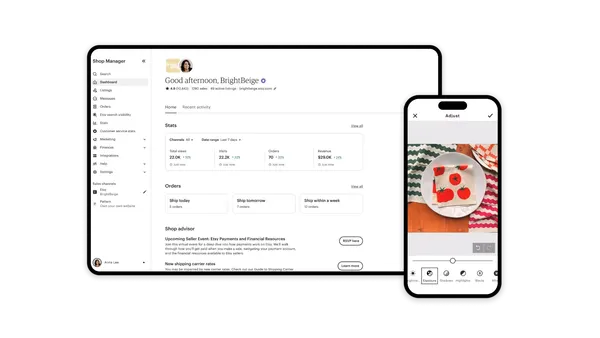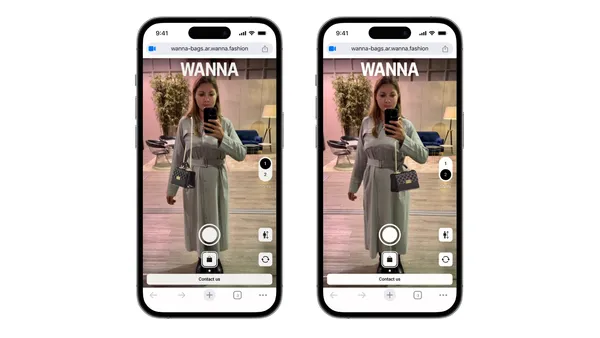Though today’s shoppers are choosier with their dollars, it’s not low-price points driving purchase decisions in 2024, say researchers. Rather, buying and post-purchase experiences are the greatest drivers of buying decisions, reports Qualtrics. For retailers, nudging shoppers to buy more hinges on their ability to satisfy the growing demand for high-relevance, hyper-personalized experiences. New AI-powered merchandising tools make that possible.
Swaying shoppers with “made-for-you” experiences
Retail has entered a new playing field where hyper-personalized experiences — or “the care of one,” as McKinsey calls it — become the standard. According to University of Helsinki researchers, boosting the relevance of product suggestions can increase revenue by as much as 30%.
Aided by AI, merchandisers can draw from a wealth of data points to make recommendations hyper-relevant to each buyer. Visitor demographics, past purchases, search terms used, region-specific trends and more can be used to deliver a custom experience, as in “This top is a great match for the pants in your cart and the shoes you bought last time. By the way, we have two left in your size.”
Bundling evolves to counter manual limitations
Product bundling — the practice of presenting shoppers with curated collections of complementary products — isn’t new. We’ve all seen plenty of “Complete the Look” collections pairing fashion accessories and apparel, “Complete the Project” home improvement recommendations, “Complete the Routine” beauty regimen pairings, and so on. And yet, product bundling remains a missed revenue opportunity for retailers who still rely on manual processes, says Lee Loomis, director of product development for Monetate, a personalization platform.
“Conventional product bundling is exceptionally labor-intensive, with someone bent over spreadsheets, recording SKU by SKU what products make up the bundle, then entering those into separate systems so they can finally be shown to shoppers. As a result of how labor-intensive the process is, you can’t achieve a high degree of catalog coverage,” Loomis explains. Most retailers he’s advised have a handful of merchandisers devoted to this task. Even so, merchandising teams are only able to feature 10% of their catalog in recommended bundles. “Bundling drives huge increases in average order value, but merchandisers don’t have the resources to build a bundle for every product in their catalog,” Loomis adds. What’s more, manual bundling is static, unable to respond to individual shopping behaviors, changes in inventory, new products, or evolving trends.
The need to scale past manual restraints is one reason why many retailers are moving to AI-powered dynamic bundling, blending merchandisers’ expertise with recommendation algorithms to generate product groups across an entire catalog. “With one person in a couple of weeks, you can achieve a high degree of catalog coverage, versus five people working all year to hit 10%,” Loomis notes: “Merchandisers have plenty of other responsibilities, and dynamic bundling optimizes their time.”
Boosting trust with social proof
Arguably, the best way to sell anything is to get customers to do it for you. Social proof like five-star reviews has long been used to build trust and compel shoppers to pull out their credit cards. With the help of AI, even social proof messaging can be made relevant to individual shoppers.
“You can use social proof to make shoppers confident in their purchase decisions and increase sales. We feel good when we add a best seller to our cart or know that 100 other people bought this product today and we're more likely to buy as a result,” Loomis shares. Toolstation, one of Europe’s largest trade & DIY hardware brands, recently sought out Monetate to test social proof in their digital retail channels. The pilot setup took just five minutes and produced a 30X return on investment.
Retailers have also leaned on Monetate to replace manual product badging with automated social proof. Previously, one retailer had product teams check which 100 products were bestsellers each week, then manually add “Best Selling” badges to each product. Beyond automating that chore, retailers can also use the Monetate platform to test messaging and placement of social proof elements, reporting significant revenue lifts.
Nudging shoppers post-checkout
Upselling and cross selling shouldn’t end with a completed transaction. Retailers using Monetate’s digital merchandising can still sway shoppers to add items relevant to their order post-checkout.
Tactics might include incentivizing a related purchase immediately following the transaction on a thank-you page, emailing custom bundles to customers, and adding those recommendations to the retailer’s home page.
Uncovering high-converting elements with testing
Data is a much safer bet than hunches — which is why high-converting retailers continuously test digital merchandising rules, messaging, placement and more. “Merchandisers know the importance of testing to drive revenue, but don’t always have the bandwidth or tools to do it as they’re adding new components to their site,” says Bogar Alonso, director of content and product marketing for Monetate.
Often identifying where to start testing is a challenge. That's where a tool like Monetate Journey Analytics comes in. It helps you segment and compare the performance of multiple campaigns to the high performers and holes in the bucket. These low-performing areas are great opportunities to begin optimizing,” Loomis says.
Landmark Group, a multinational retail and hospitality conglomerate, uses Monetate for A/B and dynamic testing, segmentation, product recommendations, social proof messaging and other elements. Altogether, the integrated personalization strategy earned Landmark a 39% lift in revenue per session.
Vetting a digital merchandising solution
In choosing a digital merchandising solution, Loomis and Alonso highlight four considerations: First, determine your desired level of control. “Do you want full control over the digital merchandising components we’ve explored so far? And do you want to leverage data you already have? Or do you want a few merchandising functions built for you with zero involvement?” — shares Loomis.
Next, what capabilities are important to you? Take email and segmentation, for instance: Do you want to deliver personalized recommendations via email? How about creating segmented bundles for VIPs versus first-time visitors?
The pricing model is another important factor. Is there a charge for every product bundle or update you want to make, for instance? Finally, examine the provider’s track record: documented successes, use cases, strong client list.
Taking next steps
To remain competitive, retailers must put the “custom” in “customer,” Euromonitor admonishes. To make that possible at scale, merchandisers must transform how they work, says Liza Amlani, principal at the Retail Strategy Group, in an interview with Cero. “Brands and retailers should not only invest in inventory management and insight solutions, but also invest in process innovation,” she advises: “Innovating processes to simplify how teams work so they can better focus on driving customer demand with the right product at the right time, in the right place, will help retailers win in 2024.”
Learn how hyper-personalized buying journeys can move you closer to revenue goals:
Download Monetate’s Unrivaled Personalization Playbook.










